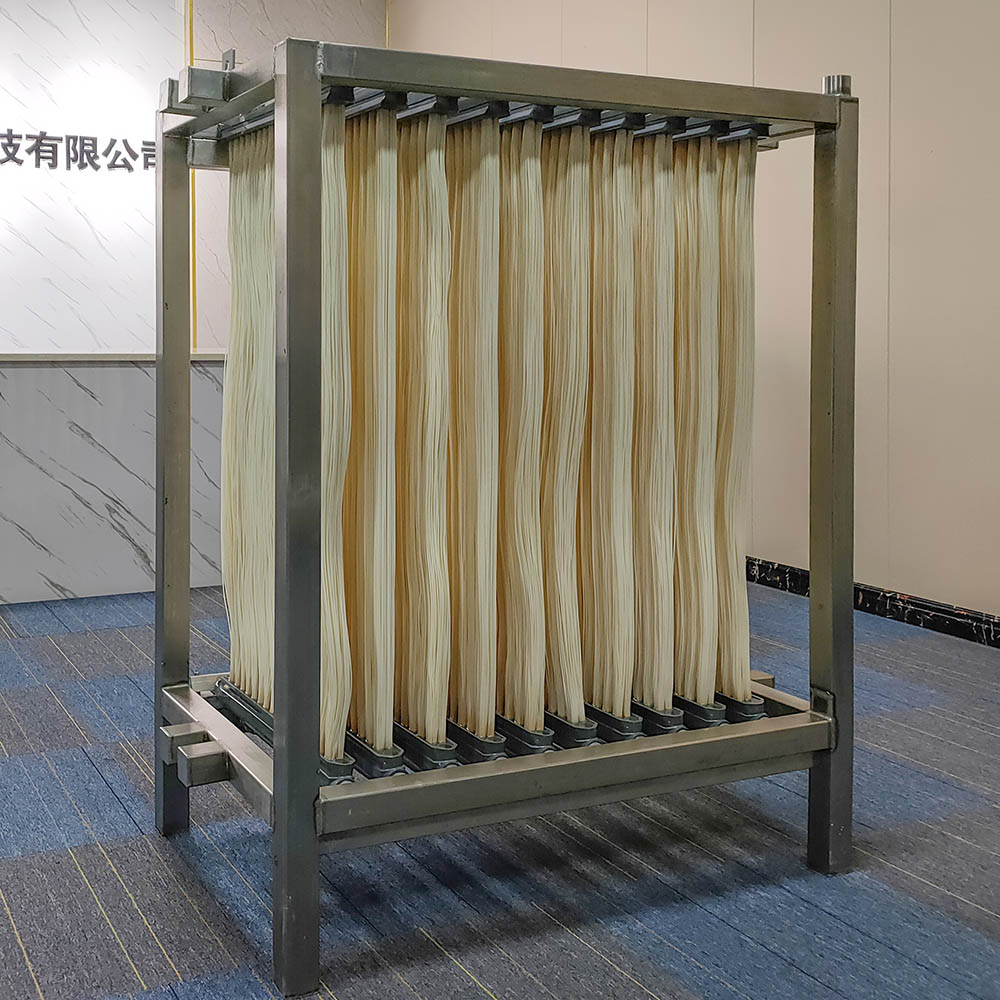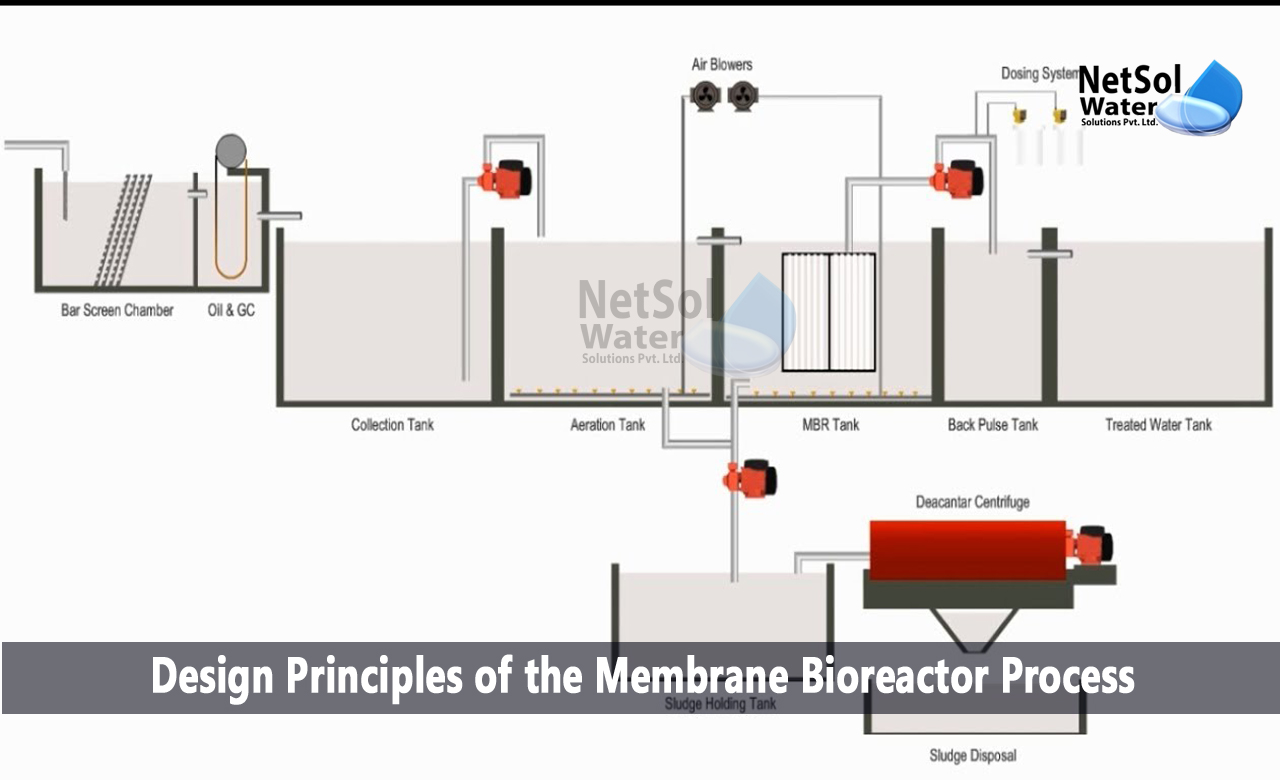Why Membrane Bioreactor is the Future of Wastewater Treatment in Industries
Why Membrane Bioreactor is the Future of Wastewater Treatment in Industries
Blog Article
How Membrane Bioreactors Are Changing Water Filtration Solutions
The development of membrane bioreactors (MBRs) stands for a considerable improvement in the area of water purification, merging biological treatment processes with innovative membrane layer filtering innovations. This combination not just improves the high quality of dealt with effluent but also addresses city area restraints, making MBRs especially ideal for largely populated locations. As worldwide water deficiency increases, the duty of MBRs in helping with potable water reuse and lasting water administration becomes significantly essential. The ramifications of this technology prolong past efficiency-- what opportunities and challenges lie in advance for its extensive execution?
Overview of Membrane Bioreactors
Membrane layer bioreactors (MBRs) represent a significant innovation in water purification technology, as they combine biological treatment processes with membrane filtering. This assimilation boosts the performance of wastewater therapy by utilizing microorganisms to degrade natural contaminants while at the same time using semi-permeable membranes to different treated water from put on hold solids and pathogens.
The MBR system usually is composed of a biological activator where the microbial populace metabolizes contaminants, followed by a membrane layer filtering system that retains biomass and allows only tidy water to pass through. This twin functionality results in higher effluent high quality compared to traditional treatment techniques. MBRs can be run in both set and constant circulation modes, using versatility in style and application.
Additionally, MBRs are defined by their small impact, making them appropriate for metropolitan setups with space constraints. Membrane Bioreactor. They additionally allow the recuperation of water for reuse, hence adding to water sustainability efforts. While MBR modern technology has gained appeal in commercial and community applications, its operational intricacies and power demands necessitate careful factor to consider throughout execution. Generally, MBRs go to the forefront of improving water treatment effectiveness and top quality, showcasing the possibility for cutting-edge options in ecological monitoring.
Advantages of MBR Technology
The combination of biological treatment with membrane filtration supplies many advantages for water purification procedures. One of the key advantages of Membrane layer Bioreactor (MBR) modern technology is its ability to effectively remove both not natural and natural pollutants, bring about top quality effluent. The membrane layers work as a physical obstacle, protecting against suspended solids and pathogens from travelling through, which enhances the overall safety and security and integrity of treated water.
In addition, MBR systems call for a smaller sized footprint compared to standard therapy techniques, enabling for more reliable area application. This portable style is particularly advantageous in urban settings where land is restricted. MBRs additionally show functional flexibility, suiting differing influent high qualities and flow prices without significant performance degradation.
Furthermore, the process supplies boosted nutrient elimination capacities, specifically for nitrogen and phosphorus, which are essential for stopping eutrophication in getting waters. The decreased sludge production connected with MBR innovation additionally converts to lower disposal expenses, making it a cost-effective service in the future - Membrane Bioreactor. In general, the benefits of MBR modern technology placement it as a leading option for lasting and innovative water filtration systems, addressing both environmental and economic worries
Applications in Water Purification
Applications of Membrane Bioreactor (MBR) modern technology in water filtration are impactful and varied, addressing different treatment needs throughout numerous industries. MBRs properly integrate biological therapy procedures with membrane layer purification, making them excellent for community wastewater therapy, commercial effluent monitoring, and also drinkable water reuse efforts.
In community setups, MBRs are progressively utilized to boost the top quality of dealt with wastewater, enabling for compliance with rigorous discharge guidelines and assisting in the recycling of water for irrigation and non-potable usages. Their portable design likewise makes them appropriate for city environments where space is limited.
Industrially, MBR technology is made use of to deal with procedure water and wastewater, specifically in industries such as food and drink, drugs, and textiles. By properly removing pollutants and suspended solids, MBRs assist markets lessen ecological effects while recuperating useful resources from wastewater streams.
Additionally, MBRs are getting traction in decentralized water treatment applications, where small-scale systems can be deployed in remote locations or establishing areas. This adaptability enables site web areas to attain lasting water administration remedies, improving access to clean water while minimizing dependence on standard treatment approaches.
Instance Researches and Success Stories

In an additional example, a fabric production center in Bangladesh adopted MBR innovation to resolve its wastewater challenges. The system decreased chemical oxygen demand (COD) levels from 1,200 mg/L to less than 100 mg/L, therefore meeting regulative criteria and substantially reducing environmental influence.
The College of Cape Community's MBR installment has actually confirmed reliable in treating greywater for non-potable reuse on university. This task not only saves potable water but additionally serves as an educational model for sustainable techniques.
In addition, a seafood processing plant in Norway utilized MBR innovation to treat effluents having high degrees of raw material, accomplishing over 90% contaminant elimination. These case studies underscore MBR technology's convenience and its vital function in improving water high quality throughout varied applications.
Future of Water Treatment Solutions
As worldwide water scarcity and air pollution challenges intensify, cutting-edge water treatment solutions are becoming increasingly necessary to make certain sustainable accessibility to clean water. The future of water therapy depends on the integration of sophisticated innovations that boost the efficiency and efficiency of filtration processes. Membrane bioreactors (MBRs) go to the forefront of this evolution, integrating biological treatment with membrane purification to create premium effluent suitable for numerous applications.

Arising patterns such as resource recovery from wastewater, consisting of nutrients and energy, will better transform treatment facilities right into green centers. Improvements in nanotechnology and membrane products guarantee enhanced performance and longevity of filtration systems.

Final Thought
Their function in potable water reuse and sustainable water monitoring highlights their value in addressing global water shortage difficulties. Continued study and growth will certainly better enhance the efficacy and fostering of MBR modern technology, making sure a resistant future for water treatment solutions.
The emergence of membrane bioreactors (MBRs) stands for a considerable advancement in the field of water filtration, merging biological therapy processes with advanced membrane layer filtering innovations. As international water shortage magnifies, the role of MBRs in assisting in drinkable water reuse and sustainable water monitoring becomes progressively vital. They likewise make it possible for the healing of water for reuse, hence adding you could try these out to water sustainability initiatives.As global water scarcity and air pollution obstacles heighten, innovative water treatment remedies are ending up being increasingly essential to make certain sustainable access to clean water. Their function in safe and clean water reuse and lasting water management highlights their significance in dealing with global water scarcity obstacles.
Report this page